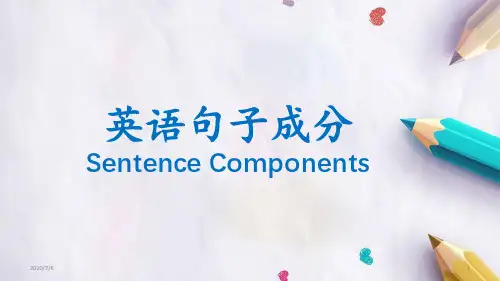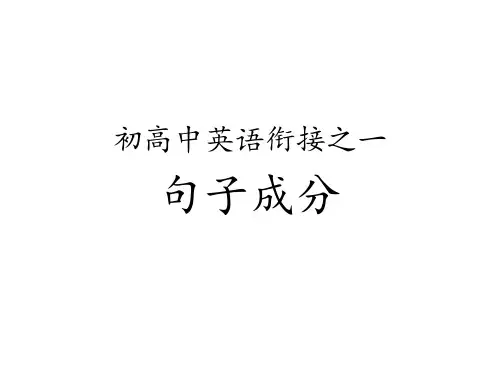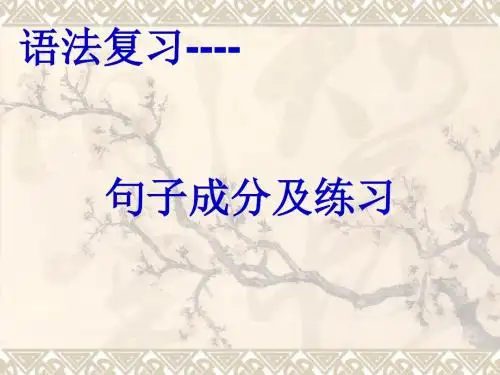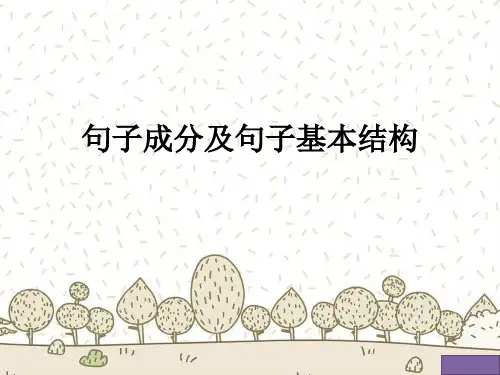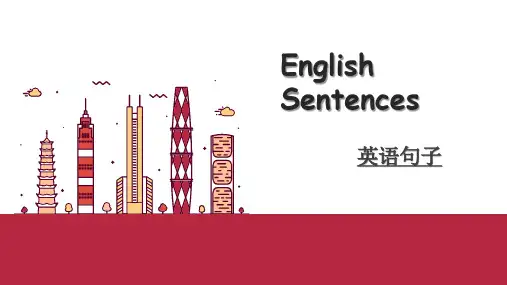(三)谓语
2、复合谓语:
(1)由情态动词加动词原形构成。如: You may keep the book for two weeks. (2)由助动词加动词原形,现在分词,过去分词构 成。如: Do you speak English? They are working in a field. He has caught a bad cold. (3)由系动词加表语构成。如: We are students. 注意:谓语与主语在人称与数方面要保持一致。
注意:系动词(Linking verb)用于连接主语和 表语,说明主语的状态,性质特征和身份等。 1)状态系动词用来表示主语状态,只有be一词, 例如: He is a teacher. 2)持续系动词用来表示主语继续或保持一种状况 或态度,主要有keep, remain, stay, lie, stand, 例如: He always kept silent at meeting. 3)表像系动词用来表示“看起来像”这一概念, 主要有seem, appear, look, 例如: He seems (to be) very sad.
直接宾语表示动作的承受者,一 般是物。间接宾语表示动作是对 谁或为谁做的,一般是人。
可接双宾语的动词依据其所搭配 的介词,可分为以下三种情况:
1.verb+sb+sth=verb + sth. + to + sb. 这类动词后面的间接宾语后置时,间接宾语 前要用介词to。 Please show me your passport. →Please show your passport to me. 请把护照给我看一下。 I will return you the book tomorrow. →I will return the book to you tomorrow. 书我明天还你。

